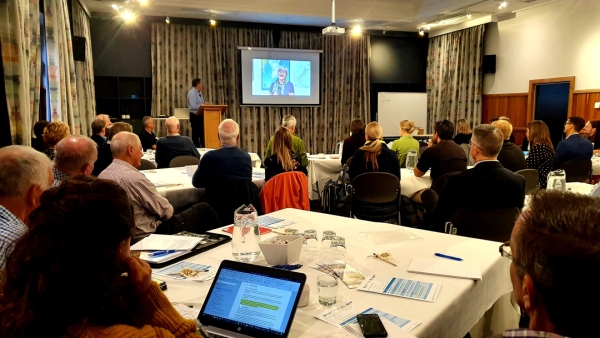An underwater invader recently brought key agencies and organisations including Land Information New Zealand, NIWA, Otago Regional Council, Boffa Miskell, Department of Conservation, Ministry for Primary Industries, Fish and Game and Lake Guardians, together in Wanaka.
Combatting and controlling the aquatic weed lagarosiphon was the day’s focus.
Lagarosiphon and other invasive weeds have had a devastating impact on our lakes and how we can use them. These weeds are primarily spread by human activities, such as accidental transfer through boating and fishing gear contaminated with plant fragments. Pieces of plant as small as 1 cm have the potential to start a new infestation. Lagarosiphon has been managed in Lake Wanaka since 1974 to help protect the lake and other pristine and iconic lakes in the Otago region.
The Regional Lake-Weed Forum 2020 explored the history of lagarosiphon in Otago and looked at how it is being managed and controlled. Two visiting scientists from the USA gave talks providing an international perspective on aquatic weed.
In the afternoon, members of the forum were the first to view the winning video entries from the Lake Invaders School Video Competition. The competition was for Year 7-13 students in the Queenstown Lakes and Central Otago Districts region, provided students with an opportunity to share their connections with their lakes and how lagarosiphon and other freshwater pests are having an impact on them. The winning entries can be viewed on NIWA’s website.
The response to the forum was extremely positive, with participants saying it was a great opportunity not only to get up to speed with the latest research and tools for managing the spread of the invasive species, but also connect with others who are fighting the problem on the ground to share ideas and experiences.
Paul Champion, Principal Scientist Freshwater Ecology - Aquatic Plants at NIWA, says the forum showcased NIWA’s research and strategic approaches to the management of invasive species, which will in turn support those managing the lakes. It was also a valuable opportunity to get feedback on future research needs.
“For us, being able to understand the key issues directly from those who are dealing with the threat day in and day out, is critically important in informing the direction we take from a science and research perspective,” he says.
NIWA works closely with LINZ, who is actively combating lagarosiphon in Otago waterbodies as part of their biosecurity programme for crown land (including many lakes and riverbeds). A Memorandum of Understanding was announced at the conclusion of the forum to formalise the ongoing relationship between NIWA and LINZ.


